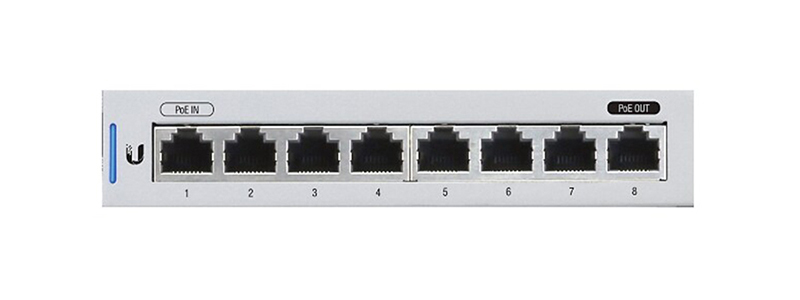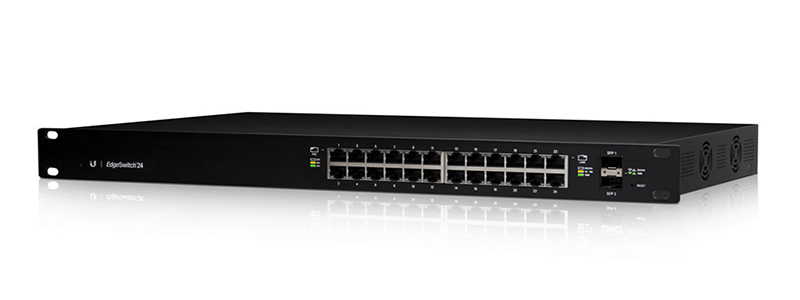
Most home routers on the market usually have up to four Ethernet ports. For some people, this is not enough—especially if you have multiple devices running on your network, such as laptops, game consoles, and smart home accessories. Your best choice is to buy a network switch. Most of these switches will be equipped with 8 to 48 PoE.
Here, we’ll provide an in-depth review and compare two popular switches of Ubiquiti Switches to see their differences and similarities.

What are the differences between the Ubiquiti Unifi Switch and EdgeSwitch?
| Model | Unifi Switch | EdgeSwitch |
| Color | White | Black |
| Dimensions (inches) | 1 x 1 x 1 | 8.03 x 1.69 x 9.25 |
| Watts | 150 | 240 |
Unifi vs EdgeSwitch – How do they differ?
PoE features
The Unifi switch allows you to operate your IP cameras and phones through a single network cable. Unifi switches support both PoE + (802.3 at) and PoE (802.3 af). Since it complies with the IEEE 802.3af/at standard, it will automatically detect the switching voltage when needed. For each port, it supports up to 34.2W. This provides up to 150W total power support for 8 PoE ports. The hardware specifications of EdgeSwitch are very similar to those of Unifi switches. These devices are available in 8, 16, 24, and 48 PoE.
Design
The Unifi switch is made of an all-metal chassis. It is also fanless, which means it does not make any noise. There are ventilation holes on the back and sides for heat dissipation. Most of the functions of the Unifi switch are on the front. There is an LED light with an on/off button. The 8 RJ-45 PoE+ ports have their own independent LED lights to display the status of the Ethernet connection. You also get two SFP ports for fiber optic connections and a small reset button. The AC power connection port is located on the front of the device.
The EdgeSwitch has a comprehensive user-interface that makes setting up a breeze. The graphical interface is ideal for beginners into switch products. For more advanced network administrators they can use the command-line interface (CLI). This is available in SSH and telnet.
Installation and software
When installing a Unifi switch, you need a DCHP server, and you need to assign an IP address to the Unifi device. You also need Unifi controller software to manage the switch settings. The device can be wall-mounted and comes with all necessary screws and accessories. After connecting the device to the power source and ensuring that all network cables are working properly, you will install the Unifi controller software. Please note that the controller first needs any connected Unifi devices before they can be configured. Once the Unifi controller detects the device, it will automatically adopt it.
One of the main differences between the two is how you manage the router. For Unifi, everything is done through its controller interface, but when it comes to EdgeSwitch, the situation has changed. EdgeSwitch has two commands-L2 and L3, and you can access them via Telnet, SSH, HTTP, and HTTPS. This means you can manage EdgeSwitch through the web interface or CLI. It also supports routing protocols, which are completely absent in Unifi switches.
Unifi vs EdgeSwitch –Pros and Cons
Unifi
Pros
- Durable metallic structure
- Ability to be wall mounted
- Integrates well into the Unifi line
- Silent operation due to the absence of a fan
Cons
- Cannot be stacked
EdgeSwitch
Pros
- Will automatically switch your port traffic without any packet loss
- Support of both 1G and 10G Ethernet connections
- Extensive suite of layer 2 switching features
- Easy to operate and setup
- Fanless hence enabling it to operate with little noise
Cons
- Ethernet LED lights not well placed
Conclusion
These two switches have almost similar functions. One of them is 8, 16, 24 and 48 Gigabit PoE. However, EdgeSwitch has advantages over Unifi because it has L2 and L3 commands. It can also be accessed via HTTP/S, SSH, and Telnet. Changes to Unifi can only be done through the Unifi controller. If you have a few IP cameras that you want to connect to the network, then the Switch will work well.
More information please click here: Ubiquiti Switches, Cisco Switches, HPE Switches, Switches
learn more:
Dell PowerEdge 14G Servers vs. HPE ProLiant Gen 10 Servers
Huawei Switches Vs. Juniper Switches
Dell Servers vs. HPE Servers: Mapping Dell PowerEdge 14G with HPE ProLiant Gen 10



